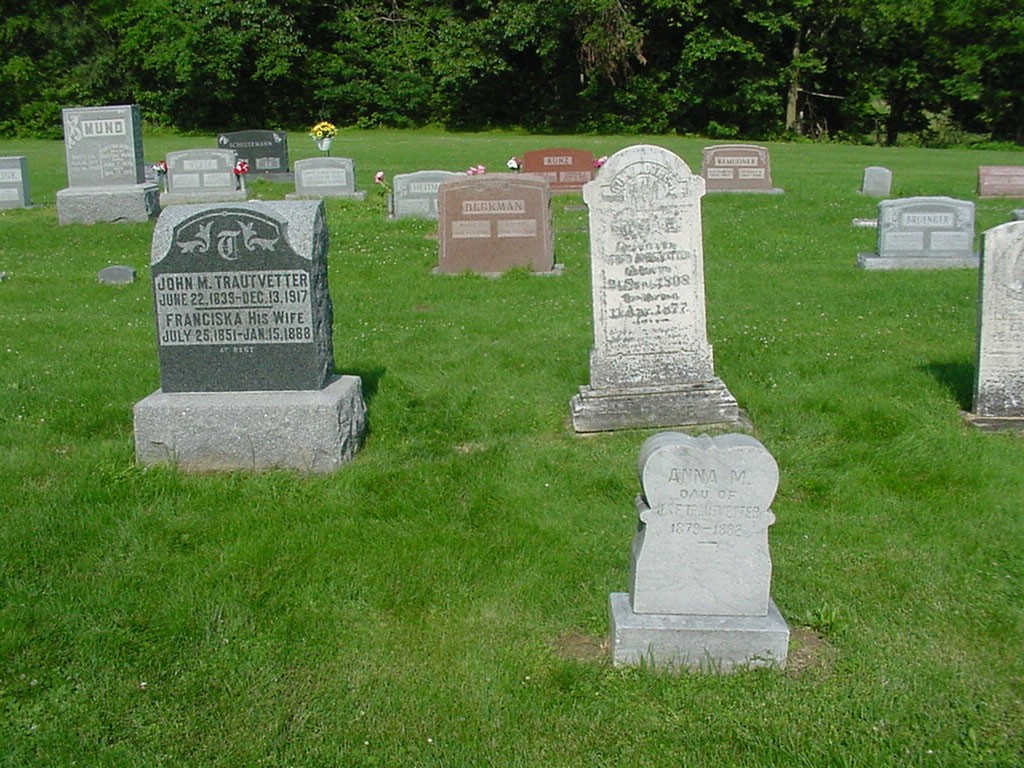In Evidence Explained, Elizabeth Shown Mills discusses “The Name’s the Same” Rule (page 28–3rd edition).
She discusses and mentions a variety of non-name factors that one must consider in determining whether two individuals with the same name really are in fact the same person. One of those considerations she mentions is “haunts.”

Eternal neighbors John M., Franciska, Sophia, and Anna Trautvetter. Bethany United Church of Christ Cemetery, Tioga, Hancock County, Illinois; digital photograph taken by Michael John Neill, 2004.
I think she means “haunts” in the sense of those locations that a person tends to frequent. After all, some records do provide evidence about places a person regularly appears. I learned a long time ago never to assume what an author means to say “between the lines.”
As I read further I realized there was another way one could interpret “haunts.” But I am fairly certain the use of the word “haunt” in Evidence Explained had nothing to do with ghosts and zombies.
But it could easily reference cemeteries. The burial location of an ancestor is certainly her “final haunt” and who is in that neighborhood with them is a clue to many things. Your ancestor’s permanent neighbors can provide evidence of family connections, church affiliation, final residence and more. Of course burial in a church cemetery is not proof of church attendance and burial location is not to be equated with death location. But they are still clues.
Haunting, isn’t it?

One response
Quite often I have found in old records, ” the relic Rebecca (or some other female name)” referring to the widow.